
Beer is a relatively small lunar impact crater located on the Mare Imbrium, to the east of the crater Timocharis. It was named after German astronomer Wilhelm W. Beer. Just to the northwest is the matching twin Feuillée.

Brayley is a lunar impact crater located in the southwest part of the Mare Imbrium. It was named after British geographer Edward W. Brayley in 1935. It has a circular rim and a low rise in the center. There are no notable craters overlapping the rim or interior. The sinuous rille Rima Brayley passes to the north of Brayley.
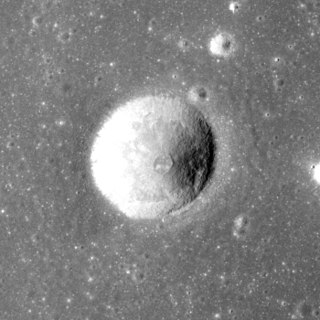
Borel is a tiny lunar impact crater located in the southeast part of Mare Serenitatis. It was named after French mathematician Émile Borel. To the northeast is the crater Le Monnier and to the southeast is the crater Abetti. Borel was previously identified as Le Monnier C.
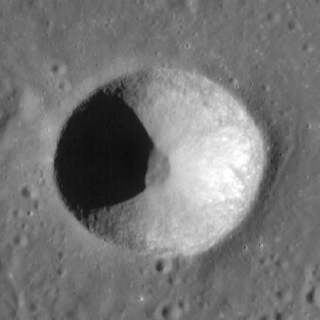
Biot is a small, bowl-shaped lunar impact crater located in the southern reaches of the Mare Fecunditatis. It is named after French astronomer Jean-Baptiste Biot."Biot (crater)". Gazetteer of Planetary Nomenclature. USGS Astrogeology Research Program. It is a circular formation with a sharp-edged rim that has not been significantly worn. The inner walls slope down to a relatively small interior floor. The albedo of the wide inner walls is higher than the surrounding lunar mare, giving it a light hue. To the southeast is the crater Wrottesley.

Yerkes is a lunar impact crater near the western edge of Mare Crisium. It was named after American financier Charles Yerkes. To the east of Yerkes is the crater Picard, and farther to the north is Peirce.
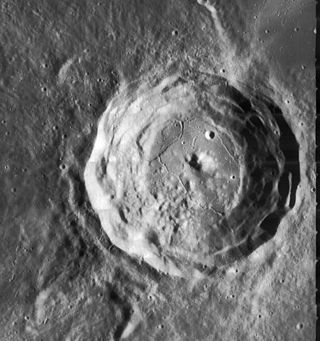
Cardanus is a lunar impact crater that is located in the western part of the Moon, in the western part of the Oceanus Procellarum. Due to its location the crater appears very oval because of foreshortening, and it is viewed almost from the side.
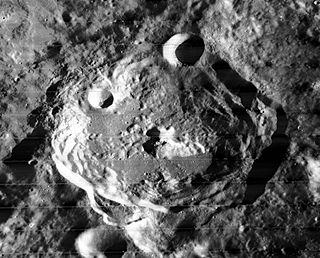
O'Day is a prominent lunar impact crater that is located on the far side of the Moon. It intrudes into the northwestern edge of Mare Ingenii, and the rim is lower on that side. To the northwest is the crater pair of Holetschek and Sierpinski. Southwest of O'Day lies the crater Seidel. It is named in honour of the American physicist Marcus O'Day.

Alfraganus is a small lunar impact crater that lies in the rugged highland region to the southwest of the Mare Tranquillitatis. It is named after the Ozbek (Turk) Muslim astronomer Alfraganus. Northwest of Alfraganus is the crater Delambre, and to the south is the irregular Zöllner. The rim of Alfraganus is circular and retains a sharp edge that has not received a significant amount of wear due to subsequent impacts. The interior floor is roughly half the diameter of the crater rim.

Archytas is a lunar impact crater that protrudes into the northern edge of Mare Frigoris. To the northwest is the comparably sized crater Timaeus, and the smaller Protagoras lies in the opposite direction to the southeast. Further to the southwest, beyond the opposite edge of the mare, is the dark-floored crater Plato.

Baade is a lunar impact crater that is located near the southwest limb of the Moon on the near side, to the southwest of the enormous Mare Orientale impact basin. The area to the east of this crater forms the junction between the 280-km-long Vallis Bouvard to the north and the narrower, 160-km-long Vallis Baade to the south-southeast. Both valleys radiate away from the impact basin to the north.

Boss is a lunar impact crater that is located along the northeast rim of the Moon's near side. Due to its location, the crater is viewed from the side by observers on the Earth, and its visibility is subject to libration effects. It was named by the IAU in 1964 for astronomer Lewis Boss.

Democritus is a lunar impact crater that is located on the northern part of the Moon, just to the north of the Mare Frigoris. Just to the south of Democritus is the lava-flooded crater Gärtner, which forms a bay on the mare. Directly to the north is Arnold, another flooded formation.

Calippus is a small lunar impact crater that is located on the eastern edge of the rugged Montes Caucasus mountain range in the northern part of the Moon. It was named after Greek astronomer Callippus of Cyzicus. It lies to the southwest of the crater remnant Alexander, to the northwest of the Mare Serenitatis.
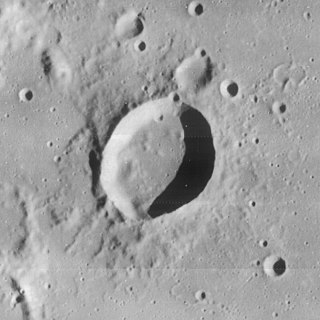
Clausius is a lunar impact crater that is located in the southwest part of the Moon, in the small lunar mare designated Lacus Excellentiae. It is completely enclosed by mare material, although the tiny satellite crater Clausius A lies just to the north. The rim of Clausius is low and sharp, with a slightly oval shape that is longer in the north–south direction. The interior floor has been flooded by basaltic lava, and appears level and featureless with a darker surface that matches the mare surface that surrounds the crater exterior.
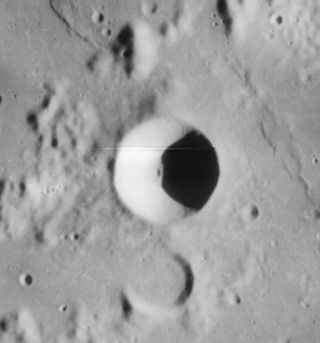
Darney is a small lunar impact crater that is located on the region of the Moon where the Mare Nubium joins the Oceanus Procellarum. It was named after French astronomer Maurice Darney. To the south is the lava-flooded crater Lubiniezky. The southern rim of Darney is attached to a series of low ridges that extend to the southwest.
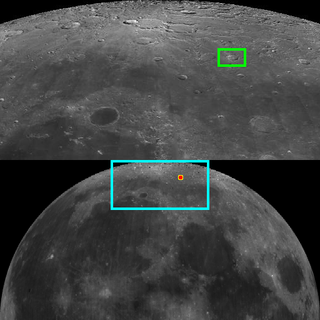
C. Mayer is a lunar impact crater that is located at the northern edge of the Mare Frigoris, due north of the prominent crater Aristoteles. Also to the south, but only a third as distant, is the smaller crater Sheepshanks. Due east of C. Mayer is the flooded crater Kane.
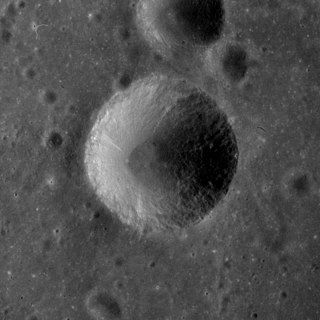
Franck is a small lunar impact crater that lies near the north end of Sinus Amoris, a bay on the northern part of Mare Tranquillitatis. Its diameter is 12 km. It was named after German physicist and Nobel laureate James Franck. The crater lies just to the southeast of Brewster, and farther to the south of Römer. Franck was previously designated Römer K.

Feuillée is a small lunar impact crater in the eastern part of the Mare Imbrium. It was named after French natural scientist Louis Feuillée. It lies less than a half crater diameter to the northwest of Beer, and the two formations form a nearly matched pair. To the west is the small but prominent crater Timocharis.

Kunowsky is a small lunar impact crater on the Mare Insularum, in the western half of the Moon's near side. It is named after the German astronomer Georg Karl Friedrich Kunowsky. It lies about one third the distance from Encke to the west-northwest and Lansberg to the east-southeast.
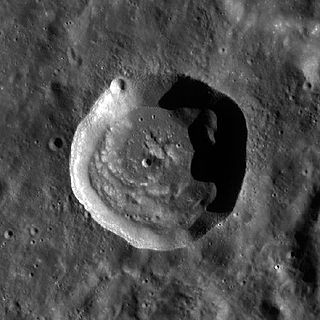
Chant is a lunar impact crater that is located on the far side of the Moon, behind the southwest limb as seen from the Earth. It lies within the southwestern part of the blanket of ejecta surrounding the Mare Orientale, beyond the Montes Cordillera mountain ring. To the west-northwest is the large walled plain Blackett. Southward is the crater Mendel.





















